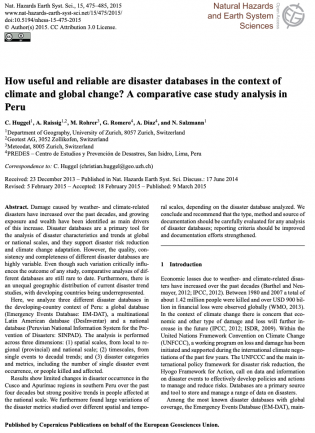How useful and reliable are disaster databases in the context of climate and global change? A comparative case study analysis in Peru

Disaster databases are a primary tool for the analysis of disaster characteristics and trends at global or national scales, and they support disaster risk reduction and climate change adaptation. However, the quality, consistency and completeness of different disaster databases are highly variable. Such variation critically influences the outcome of any study.
This study analyzes three different disaster databases in the developing-country context of Peru: a global database (Emergency Events Database: EM-DAT), a multinational Latin American database (DesInventar) and a national database (Peruvian National Information System for the Prevention of Disasters: SINPAD). Results show limited changes in disaster occurrence in the Cusco and Apurímac regions in southern Peru over the past four decades but strong positive trends in people affected at the national scale.
The study concludes and recommends that the type, method and source of documentation should be carefully evaluated for any analysis of disaster databases; reporting criteria should be improved and documentation efforts strengthened.